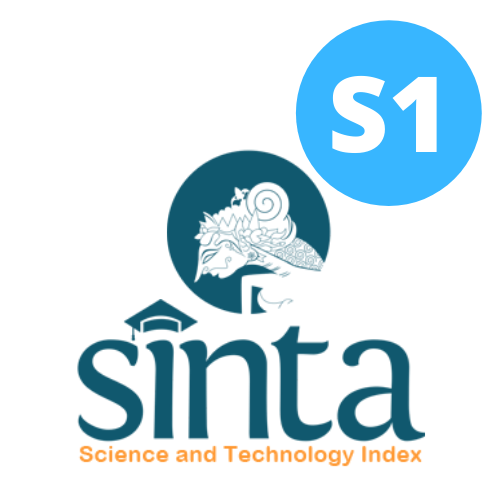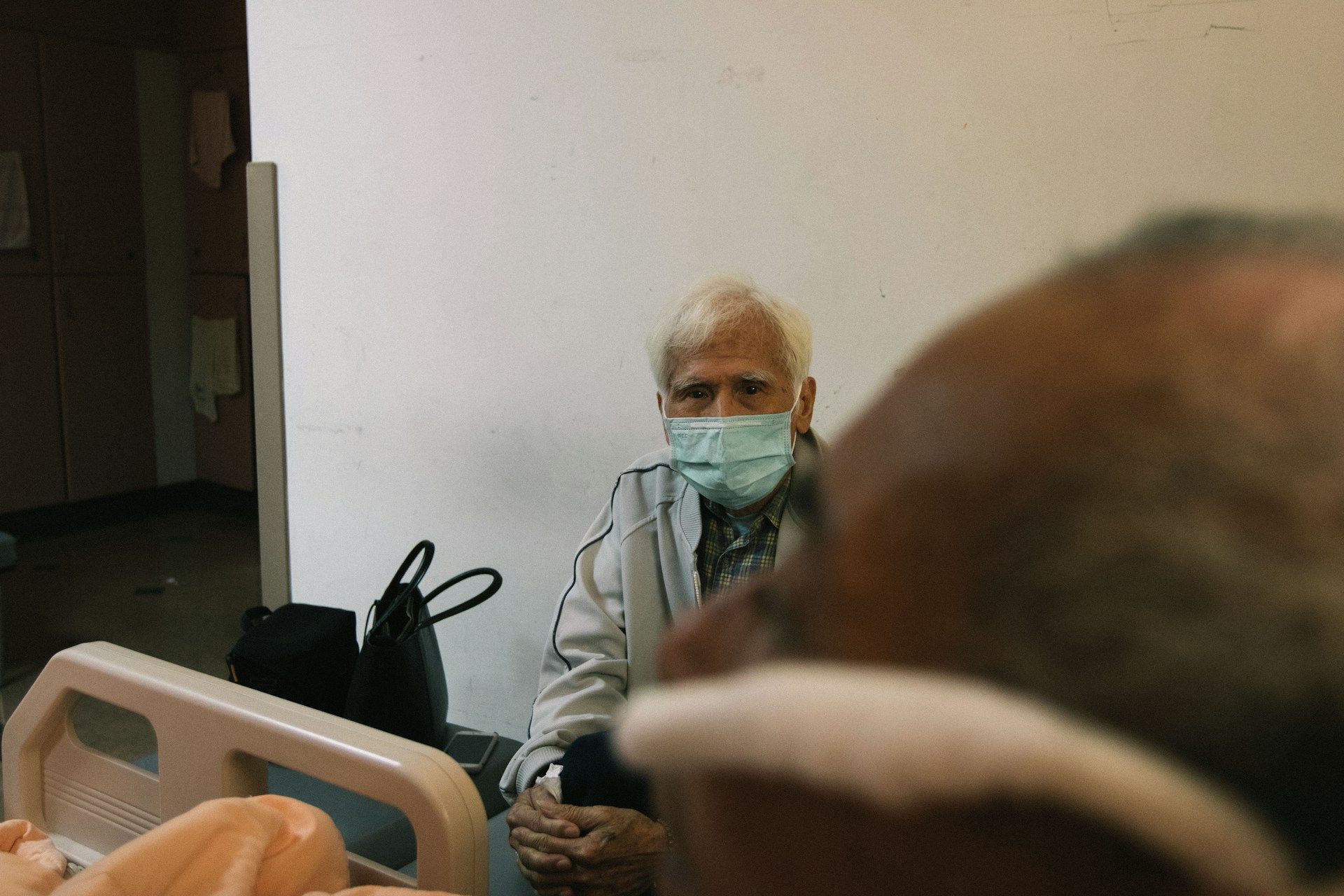Factors Associated with the Incidence of Obesity among College Students at Fakultas Ilmu Kesehatan Universitas Pembangunan Nasional “Veteran” Jakarta
Faktor-Faktor yang Berhubungan dengan Kejadian Obesitas pada Mahasiswa Fakultas Ilmu Kesehatan Universitas Pembangunan Nasional “Veteran” Jakarta

Downloads
Background: Obesity is a nutritional issue with an escalating prevalence. Riskesdas 2018 indicates that the adult obesity rate has reached 21,8%. College students are in a transitional phase from adolescence to adulthood, which necessitates adaptation to the academic environment that often lead to the development of unhealthy lifestyles. This issue causes college students susceptible to obesity due to risk factors, such as eating patterns, eating behavior, physical activity, and stress.
Objectives: Analyzing factors associated with the incidence of obesity among college students at Fakultas Ilmu Kesehatan Universitas Pembangunan Nasional (FIKES UPN) "Veteran" Jakarta.
Methods: Observational analytic research with a cross-sectional design, conducted from February-April 2024, involving 232 respondents. Respondents were selected using the stratified random sampling. Data were obtained using questionnaires and anthropometric measurements then analyzed using the Chi-Square Test.
Results: The statistical analysis indicate that the frequency of sweet food consumption has a p-value of 0.111, sweet beverages frequency (p-value=0.733), high-fat food frequency (p-value=0.036), sweet intake (p-value=1.000), high-fat intake (p-value=0.426), fiber intake (p-value=0.819), emotional eating (p-value=0.057), external eating (p-value=0.871), physical activity (p-value=0.271), and stress (p-value=1.000).
Conclusions: The frequency of consuming high-fat foods has been significantly associated with obesity among college students. Consequently, students are recommended to be more mindful of the frequency of high-fat foods, such as fast food and fried food, to minimize factors contributing to obesity. In contrast, obesity is not associated with the frequency of sweet foods and beverages consumption, sweet intake, high-fat intake, fiber intake, emotional eating, external eating, physical activity, and stress.
Adiyani, A. P. et al. Pola Makan, Status Gizi, Konsumsi Probiotik, Kesehatan, Frekuensi Defekasi, Kualitas Feses Mahasiswa Indekos Fakultas Teknologi Pertanian UGM saat Pandemi Covid-19. J. Gizi dan Pangan Soedirman 6, 98 (2022). https://doi.org/10.20884/1.jgipas.2022.6.1.5272
Nho, J. H. & Chae, S. W. Effects of a Lifestyle Intervention on Health-promoting Behavior, Psychological Distress and Reproductive Health of Overweight and Obese Female College Students. Healthc. 9, (2021). https://doi.org/10.3390/healthcare9030309
Mikhael, Z., Wehbe, T. & Jaoude, E. A. Nutritional Behaviors and Living Arrangements during the University Years : A Correlation Study. 5, 1–6 (2018). https://doi.org/10.47739/2378-9328/1071
WHO. Obesity and Overweight. https://www.who.int/news-room/fact-sheets/detail/obesity-and-overweight (2021).
Riskesdas. Riset Kesehatan Dasar (Riskesdas) 2013. Laporan Nasional. 2013 1 (2013).
Kemenkes RI. Hasil Riset Kesehatan Dasar Tahun 2018. Kementrian Kesehatan. RI 53, 1689–1699 (2018).
Sofyan, A. & Frisca. Hubungan Vitamin D dengan Kejadian Obesitas pada Mahasiswa Fakultas Kedokteran Universitas Tarumanagara. 1, 66–72 (2023). https://journal.untar.ac.id/index.php/JKKT/article/view/24163
Lizończyk, I. & Jośko-Ochojska, J. Relationship Between Overweight, Obesity and Sleep Disorders in Adolescents from Selected Cities of Upper Silesia, Poland. Ann. Agric. Environ. Med. 28, 193–197 (2021). https://doi.org/10.26444/aaem/118706
Aurellia, D., Tanjung, J. R. & Pramono, L. A. Association Between Excess Body Mass Index towards Excessive Daytime Sleepiness among Medical Students at the Atma Jaya Catholic University of Indonesia During the Post-COVID-19 Pandemic. J. Urban Heal. Res. 1, 38–46 (2023). https://doi.org/10.25170/juhr.v1i2.4157
Jeser, T. A. & Santoso, A. H. Hubungan Asupan Serat dalam Buah dan Sayur dengan Obesitas pada Usia 20-45 Tahun di Puskesmas Kecamatan Grogol Petamburan Jakarta Barat. Tarumanagara Med. J. 4, 164–171 (2021). https://doi.org/10.24912/tmj.v4i1.13733.
Van Strien, T., Frijters, J. E. R., Bergers, G. P. A. & Defares, P. B. The Dutch Eating Behavior Questionnaire (DEBQ) for Assessment of Restrained, Emotional, and External Eating Behavior. Int. J. Eat. Disord. 5, 295–315 (1986). http://dx.doi.org/10.1002/1098-108X(198602)5:2<295::AID-EAT2260050209>3.0.CO;2-T.
Ling, J. & Zahry, N. R. Relationships among Perceived Stress, Emotional Eating, and Dietary Intake In College Students: Eating Self-Regulation as A Mediator. Appetite 163, 1–7 (2021). https://doi.org/10.1016/j.appet.2021.105215.
Sukianto, R. E., Marjan, A. Q. & Fauziyah, A. Tingkat Stres, Emotional Eating, Aktifitas Fisik, dan Persen Lemak Tubuh terhadap Status Gizi Pegawai UPN Veteran Jakarta. Ilmu Gizi Indones. 3, 113–122 (2020). https://doi.org/10.35842/ilgi.v3i2.135.
Benbaibeche, H., Saidi, H., Bounihi, A. & Koceir, E. A. Emotional and External Eating Styles Associated with Obesity. J. Eat. Disord. 11, 1–7 (2023). https://doi.org/10.1186/s40337-023-00797-w.
Handayani, D. N. M. Upaya Pengurangan Konsumsi Junk Food untuk Menurunkan Risiko Penyakit Tidak Menular. J. Kedokt. 1–6 (2019). https://doi.org/10.31227/osf.io/qvthr.
Multazami, L. P. Hubungan Stres, Pola Makan, dan Aktivitas Fisik. Nutr. (Nutrition Reseach Dev. Journal) 02, 1–9 (2022). https://doi.org/10.15294/nutrizione.v2i1.52293.
Asriyanti, Aminyoto, M. & Duma, K. Hubungan Asupan Energi dan Aktivitas Fisik dengan Status Gizi Mahasiswa Program Studi Kedokteran Universitas Mulawarman. J. Verdure 5, 10–17 (2023). https://jurnal.stikesmm.ac.id/index.php/verdure/article/view/243
Chen, Y. et al. Higher Academic Stress was Associated with Increased Risk of Overweight and Obesity among College Students In China. Int. J. Environ. Res. Public Health 17, 1–12 (2020). https://doi.org/10.3390/ijerph17155559.
Adilah, A., Lestari, N., Herawati, E. &. Hubungan Kualitas Tidur dan Tingkat Stres dengan Obesitas pada Mahasiswa Fakultas Kedokteran Universitas Muhammadiyah Surakarta. … Fak. Kedokt. … 505–517 (2023). https://proceedings.ums.ac.id/index.php/kedokteran/article/view/2944
Tomiyama, A. J. Stress and Obesity. Annu. Rev. Psychol. 70, 703–718 (2019). https://doi.org/10.1146/annurev-psych-010418-102936.
Nabawiyah, Arneliwati & Hasneli, Y. Hubungan Tingkat Aktivitas Fisik dengan Kejadian Obesitas Remaja. Detect. J. Inov. Ris. Ilmu Kesehat. 1, 14–26 (2020). https://ejurnal.politeknikpratama.ac.id/index.php/Detector/article/view/1022.
Pridynabilah, A. Hubungan Premenstrual Syndrome (PMS) dengan Perilaku Makan dan Asupan Energi Mahasiswi Gizi Universitas Airlangga. J. FKM UNTAD 14, 112–123 (2023). https://doi.org/10.22487/preventif.v14i1.434.
Saifudin, M., Adawiyah, S. R. & Mukhaira, I. Faktor-Faktor yang Mempengaruhi Tingkat Stres Akademik pada Mahasiswa Program Studi S1 Keperawatan Non Reguler. 12, 199–207 (2023). https://doi.org/10.37048/kesehatan.v12i2.267.
Miśniakiewicz, M., Amicarelli, V., Chrobak, G., Górka-Chowaniec, A. & Bux, C. Do Living Arrangements and Eating Habits Influence University Students’ Food Waste Perception in Italy and Poland? Sustain. 16, (2024). https://doi.org/10.3390/su16052102.
Hasanah S, N., Suhadi, S. & Harleli, H. Hubungan Pengetahuan Gizi, Jumlah Uang Saku dan Kebiasaan Konsumsi Fast Food dengan Status Gizi pada Mahasiswa Fakultas Ekonomi dan Bisnis Universitas Halu Oleo Tahun 2023. J. Gizi dan Kesehat. Indones. 4, 209–214 (2024). http://dx.doi.org/10.37887/jgki.v4i4.47116
Putri, A. Z., Juhairina, Istiana, Triawanti & Setyohadi, D. Hubungan Asupan Energi dan Serat dengan Kejadian Obesitas Pada Mahasiswa Pskps Fk Ulm Tahun 2022. Homeostasis 6, 1 (2023). https://doi.org/10.20527/ht.v6i1.8782
Kemenkes RI. Peraturan Menteri Kesehatan RI Nomor 30 Tahun 2013 tentang Pencantuman Informassi Kandungan Gula, Garam, dan Lemak Serta Pesan Kesehatan untuk Pangan Olahan dan Pangan Siap Saji. (2013).
Azkia, F. I. & Wahyono, T. Y. M. Hubungan Pola Konsumsi Makanan Berisiko dengan Obesitas Sentral pada Wanita Usia 25-65 Tahun di Bogor Tahun 2011-2012. J. Epidemiol. Kesehat. Indones. 2, 11–18 (2019). http://dx.doi.org/10.7454/epidkes.v2i1.1675
Asriati & Juniasty, H. T. Analisis Perilaku Konsumsi Makanan dan Minuman Manis terhadap Prediabetes Remaja di Kota Jayapura. 14, 495–511 (2023). https://doi.org/10.22487/preventif.v14i3.970
Hardiansyah, A., Yunianto, A. E., Laksitoresmi, D. R. & Tanziha, I. Konsumsi Minuman Manis dan Kegemukan pada Mahasiswa. 20–26 (2017). https://doi.org/10.26714/jg.6.2.2017.%25p
Hidayat, A. Association Beetwen Risk Foods Consumption and Physical Activity To Nutritional Status Among Students of X College Kediri. J. Wiyata 3, 140–145 (2016).
Suha, G. R. & Rosyada, A. Faktor-Faktor yang Berhubungan dengan Kejadian Obesitas pada Remaja Umur 13–15 Tahun di Indonesia (Analisis Lanjut Data Riskesdas 2018). Ilmu Gizi Indones. 6, 43 (2022). https://doi.org/10.35842/ilgi.v6i1.339
Rahmi, R. & Nasution, S. D. Peran Leptin dalam Metabolisme. J. Pandu Husada 4, 35–40 (2023). https://doi.org/10.30596/jph.v4i2.16449
Qoirinasari, Simanjuntak, B. Y. & Kusdalinah, K. Berkontribusikah Konsumsi Minuman Manis terhadap Berat Badan Berlebih pada Remaja? AcTion Aceh Nutr. J. 3, 88 (2018). http://dx.doi.org/10.30867/action.v3i2.86
Nazila, M. R., Sofianita, N. I., Octaria, Y. C. & Fauziyah, A. Faktor-Faktor yang Mempengaruhi Status Gizi pada Wiraswasta Usia Dewasa di Kabupaten Bogor. Amerta Nutr. 7, 171–177 (2023). http://dx.doi.org/10.20473/amnt.v7i2SP.2023.171-177
Habsidiani, R. A. & Ruhana, A. Tingkat Konsumsi Gula dan Lemak antara Remaja Obesitas dan Non Obesitas Usia 15-18 Tahun di SMAN 1 Kota Mojokerto. J. Gizi Univ. Negeri Surabaya 3, 320–327 (2023). https://ejournal.unesa.ac.id/index.php/GIZIUNESA/article/view/52983
Angesti, A. N. & Manikam, R. M. Faktor yang Berhubungan dengan Status Gizi Mahasiswa Tingkat Akhir S1 Fakultas Kesehatan Universitas MH. Thamrin. J. Ilm. Kesehat. 12, 1–14 (2020). https://doi.org/10.37012/jik.v12i1.135
Rachmadianti, D. & Puspita, I. D. Korelasi antara Asupan Protein, Serat dan Durasi Tidur dengan Status Gizi Remaja. J. Ris. Gizi 8, 85–89 (2020). https://doi.org/10.31983/jrg.v8i2.6274
Waddell, I. S. & Orfila, C. Dietary Fiber in the Prevention of Obesity and Obesity-Related Chronic Diseases: From Epidemiological Evidence to Potential Molecular Mechanisms. Crit. Rev. Food Sci. Nutr. 63, 8752–8767 (2023). https://doi.org/10.1080/10408398.2022.2061909
Auliannisaa, A. & Wirjatmadi, B. Hubungan Emotional Eating dan Pola Konsumsi Makan dengan Obesitas pada Mahasiswa Tingkat Akhir. 212–218 (2023). https://doi.org/10.20473/mgk.v12i1.2023.212-218
Jayadi, A., Jamila, F., Atika, Z. & Wahyuni, S. Hubungan Stres , Kualitas Tidur dan Emotional Eating dengan Status Gizi pada Mahasiswa Tingkat Akhir Program Studi S1-Ilmu Gizi Ikbis Surabaya. 06, 14024–14034 (2024). https://doi.org/10.31004/joe.v6i2.5256
Konttinen, H. Conference on ‘ Malnutrition in An Obese World : European Perspectives ’ Symposium 1D : Emotional Eating : Pathways Underpinning Obesity Emotional Eating and Obesity in Adults : The Role of Depression , Sleep and Genes Proceedings of the Nutrition Society. 283–289 (2020) doi:10.1017/S0029665120000166.
Khotibuddin, M. Hubungan Depresi dan Perilaku Makan terhadap Berat Badan Lebih Mahasiswa Kedokteran. Nuklearmedizin. 17, 42–50 (2017). https://doi.org/10.18196/mmjkk.v17i1.3682
Noerfitri & Aulia, P. A. Perilaku Makan dan Kejadian Gizi Lebih pada Mahasiswa STIKes Mitra Keluarga Noerfitri. J. Penelit. Kesehat. Suara Forikes 13, 94–99 (2022). http://dx.doi.org/10.33846/sf13nk118
Trisnawati, E. A. & Wicaksono, D. A. Hubungan antara Gangguan Emosional dengan Emotional Eating dan External Eating pada Masa Pandemi COVID-19. Bul. Ris. Psikol. dan Kesehat. Ment. 1, 1282–1289 (2021). https://doi.org/10.20473/brpkm.v1i2.29112
Rahmadiyati, A. F., Anugraheni, F. E. S. & Saputri, A. A. Hubungan Asupan Tinggi Lemak dan Aktivitas Fisik dengan Status Gizi pada Mahasiswa. Indones. J. Biomed. Sci. Heal. 2, 1–7 (2022). https://doi.org/10.31331/ijbsh.v2i2.2349
Haris, H. M. Strategi Coping Stress Pada Mahasiswa Akhir Dalam Menghadapi Quarter Life Crisis. (2023).
Iriandi, A. M., Irawan, D. S. & Rahim, A. F. Hubungan antara Physical Activity dan Tebal Lemak Subkutaneus pada Mahasiswi dengan Berat Badan Lebih (Overweight) dan Obesitas. 5, 3138–3148 (2024). https://doi.org/10.31004/jkt.v5i2.27959
Taher, T. M. J., Aljama, M., Tariq, H. A. Z., Salih, A. J. & Sarray, F. T. R. The Association Between Stress Levels and Body Mass Index Among University Students. Maaen J. Med. Sci. 3, (2023). https://doi.org/10.55810/2789-9136.1037
Djoar, R. K. & Anggarani, A. P. M. Faktor - Faktor yang Mempengaruhi Stress Akademik Mahasiswa Tingkat Akhir. Jambura Heal. Sport J. 6, 52–59 (2024). https://doi.org/10.37311/jhsj.v6i1.24064
Serafi, A. H. S. et al. Stress and Obesity in Umm Al-Qura University Medical Students. Saudi J. Med. 3, 69–77 (2018). 10.21276/sjm.2018.3.3.3
Copyright (c) 2024 Amerta Nutrition

This work is licensed under a Creative Commons Attribution-ShareAlike 4.0 International License.
AMERTA NUTR by Unair is licensed under a Creative Commons Attribution-ShareAlike 4.0 International License.
1. The journal allows the author to hold the copyright of the article without restrictions.
2. The journal allows the author(s) to retain publishing rights without restrictions
3. The legal formal aspect of journal publication accessibility refers to Creative Commons Attribution Share-Alike (CC BY-SA).
4. The Creative Commons Attribution Share-Alike (CC BY-SA) license allows re-distribution and re-use of a licensed work on the conditions that the creator is appropriately credited and that any derivative work is made available under "the same, similar or a compatible license”. Other than the conditions mentioned above, the editorial board is not responsible for copyright violation.












































